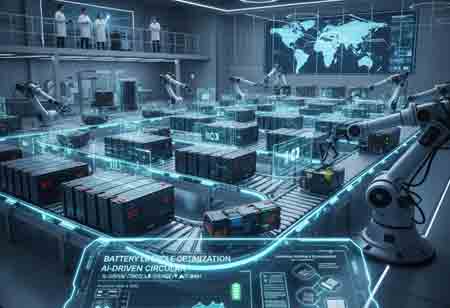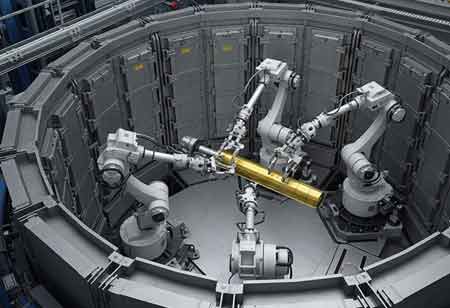CLOSE
Specials
I agree We use cookies on this website to enhance your user experience. By clicking any link on this page you are giving your consent for us to set cookies. More info
Be first to read the latest tech news, Industry Leader's Insights, and CIO interviews of medium and large enterprises exclusively from Energy Tech Review
Thank you for Subscribing
How the Smart Grid is Revolutionising Energy Management in Europe
Smart grids are energy management systems that leverage digital technology to observe and regulate the flow of electricity.

By
Energy Tech Review | Monday, July 31, 2023
Stay ahead of the industry with exclusive feature stories on the top companies, expert insights and the latest news delivered straight to your inbox. Subscribe today.
Smart grids are energy management systems which use sensors, metres, and other digital devices to gain information on energy production and consumption, which is then analysed and used to optimise energy distribution and its management.
FREMONT, CA: Smart grids are energy management systems that leverage digital technology to observe and regulate the flow of electricity. They are designed to be more flexible to dynamic energy supply and demand. They use interconnected systems of metres, sensors, and other digital devices to gain information on energy production and consumption. The received data is then analysed and utilised to optimise energy distribution and its management. Smart grids also possess the capability to interact with independent homes and businesses, which allows for more precise energy management.
Often, smart grids make use of digital technology to monitor and regulate the flow of energy. They can predict and respond to the alterations in energy demand and supply, which enables more sustainable and efficient energy management.
The Working of Smart Grids
Smart grids consist of some important components:
The advanced metering infrastructure (AMI) consists of smart meters, which gather information on energy production and consumption, and also communication networks, which enable smart meters to transfer the data to energy providers.
Distribution automation (DA) encompasses sensors and other digital devices that observe the flow of energy on the grid. DA also includes software that can identify and respond to faults and other problems that arise on the grid, which improves reliability and decreases downtime.
Demand response (DR) comprises software and other digital tools that enable energy providers to regulate energy consumption in response to changes in demand and supply. This helps in decreasing energy costs and prevents blackouts or other disruptions.
Advantages of a Smart Grid
Smart grids harbour multiple important benefits when compared to traditional energy grids.
Improved efficiency: Smart grids are designed to be more responsive and efficient to the constant regulation of energy demand and supply, which enables high-efficiency energy management.
Increased reliability: Smart grids make use of advanced sensors and other digital devices to detect the flow of energy on the grid. This allows for more efficient maintenance and quicker response times in case of faults and other issues relating to electricity, reduced downtime, and improved reliability.
Decreased costs: Smart grids aid in dressing energy costs by optimising energy distribution and its management. It also enables energy providers to alter energy consumption in response to changes in demand and supply.
Higher sustainability: By reducing energy waste and promoting the use of energy sources, smart grids promote greater sustainability levels.
Ultimately, smart grids are an innovative solution that improves the reliability, efficiency, and sustainability of energy management systems. By leveraging digital technology to monitor and regulate energy flow, smart grids can optimise energy distribution and management in real time.
It also increases efficiency, reduces costs, improves reliability, and provides higher sustainability. It has transformed the production and consumption of energy and also plays a vital role in achieving high levels of sustainability in the future.

Copyright © 2025 Energy Tech Review. All rights reserved






